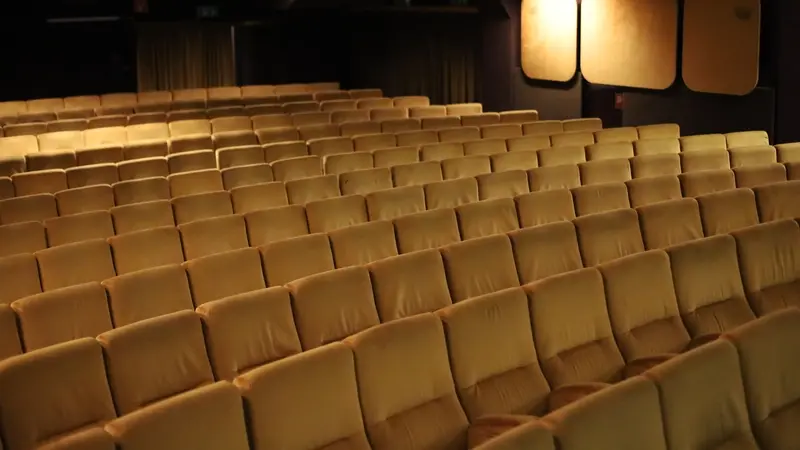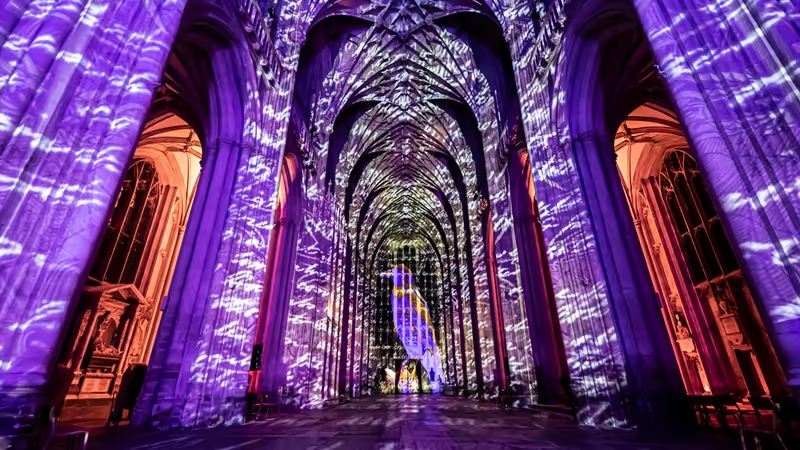Exeter RAMM launched an exhibition to celebrate LGBTQIA+ history on the eve of Exeter Pride last night at the second of its after-hours Lates events.
The Rainbow Trail is the result of five months collaborative work between X-Plore Youth Devon, Exeter College LGBTQ+ society, Natalie McGrath of Dreadnought South West and Dr Jana Funke of the University of Exeter.
The trail is the first of its kind for the museum. It invites visitors to consider what it might mean to have the museum as queer space, to queer the museum itself, by thinking about gender and sexual diversity now, in the past and across the globe.
 Queering RAMM for Exeter Pride 2019. Remixed image via Wikimedia Commons.
Queering RAMM for Exeter Pride 2019. Remixed image via Wikimedia Commons.
The collaboration began when RAMM approached Natalie McGrath to look at how the museum could become a space where LGBTQIA+ people might see their experiences and histories reflected, and how the museum might open up its collections to reveal reimagined stories.
Natalie McGrath and Jana Funke then set out to explore the museum through the eyes of young people who identify as LGBTQIA+ from Exeter College and X-Plore Youth Devon, a local charity that runs LGBTQ youth support groups.
Jana Funke said: “We had a conversation with them about what would it even mean to have the museum as a queer space. Does it mean we have to have objects that somehow depict queer people? Or that are made by queer artists? What is a queer object?”
Insight came from the group: “One of the young people was brilliant: they said we don’t need an object that is grounded in LGBT history, we need stories around the object that show how it may resonate.”
Natalie McGrath added: “It became a really playful, open, creative and very queer way to think about how any object can be queer if we frame it in a certain way.”
 Not just a Georgian dress. Photo © Vanessa Miles.
Not just a Georgian dress. Photo © Vanessa Miles.
A very open brief emerged. Jana Funke said: “We asked the young people which historical figures do you know? Who are your queer icons? What is missing in history? What do you wish you had learned in school?”
Their answers led them to a silk gown. “We were inspired by a television show called Pose, about the drag scene in 80’s New York. In the show there’s a group of queer, trans, gender diverse people who steal all these regal, royal costumes and objects from the museum in New York and do a big drag show.”
“We realised if they were to break in to the RAMM this would be one of the objects they might steal. It’s linked to black queer culture, latinx queer culture, which otherwise might not be represented in that particular gallery.
“This way we can queer the museum but can also have an intersectional approach, so it’s not just white, British, colonial history but other stories as well. It’s a very playful interpretation.”
Natalie McGrath added: “If we think about something like feminism from an intersectional point of view, there isn’t just one feminist story and there isn’t just one story that a museum can tell.
“There are so many, multiple stories within the collections themselves. Individual objects themselves present multiple stories.”
 Butterflies on the Rainbow Trail at RAMM. Photo © Vanessa Miles.
Butterflies on the Rainbow Trail at RAMM. Photo © Vanessa Miles.
The exhibition represents nothing less than a reinvention of the objects themselves, which are finding a new identity by being seen this way.
Jana Funke said: “The idea of looking at RAMM as a space that is coming out of a colonial, patriarchal, history then saying let’s come in and queer it and look at it from a different perspective is pretty powerful. And the museum were brilliant at letting us do what we wanted.
“They didn’t try to tell us you have to do this, or you have to work in a particular way. It was more like, we want to work with you and see what ideas you have to open up the space.”
Natalie McGrath said: “And we learned a lot from the young people. They were really engaged and were very articulate, intelligent and hungry to know more.”
Jana Funke added: “I was really impressed. There were things I teach that I have to explain to my first year students at the university but the young people just got it, they knew it anyway. Some of them have even started their own LGBTQ classroom initiatives.”
“This is just the beginning. RAMM are really onboard: we see this as the launch of something we can develop, hopefully bringing more voices to the museum. In the autumn we are going to start giving tours, walking round the museum with people and talking about the objects.
“And we also want to capture other voices, more young people, but also older people and people of colour who come from different ethnic backgrounds, to find other ways we can queer the museum.”
The Rainbow Trail is now open at RAMM. A printed guide is available in the museum reception and on the RAMM website.










